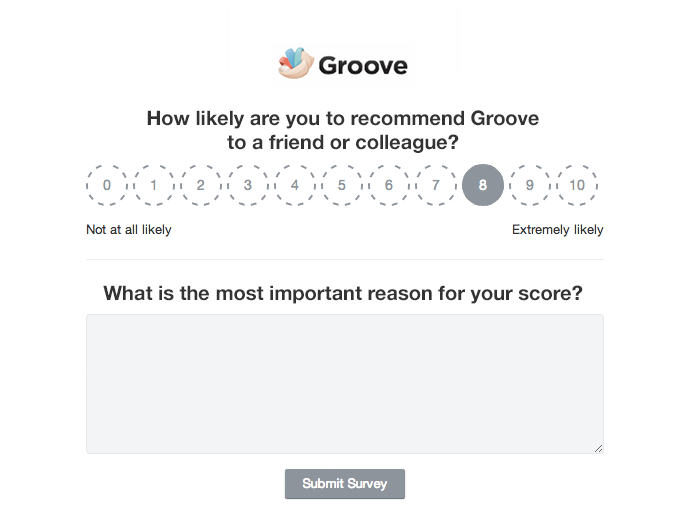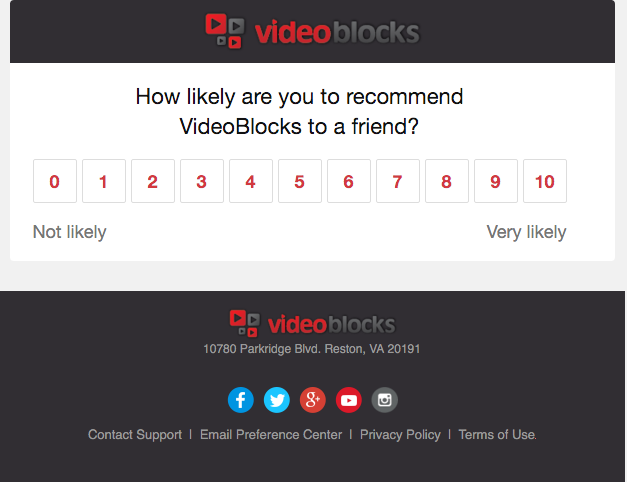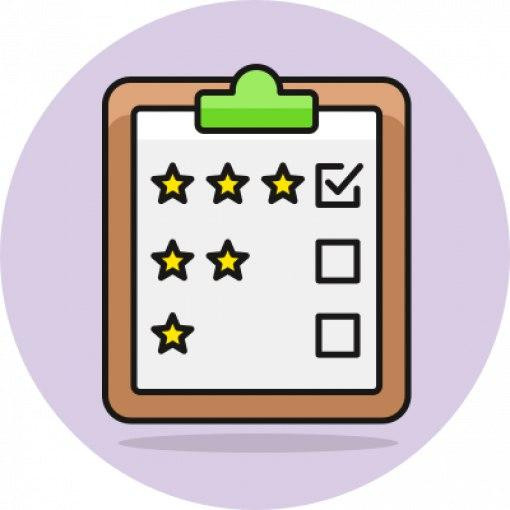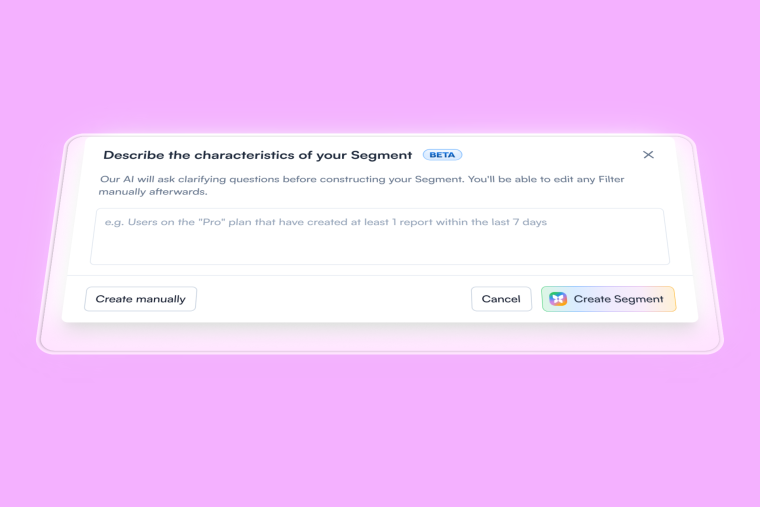When starting a new business, collecting user feedback is one of the most important priorities. As time goes on and your product evolves, user feedback is still just as important to keep the product on track and meet the demands of a maturing market.
After all, you aren’t building a product for you and your team. Without feedback, you don’t have the full story on how the thing you’re building is being used. What do users love, and what do they hate?
That information will be spread across support tickets, Twitter and sales calls -- but most of it is still in your users’ heads. Short of interviewing them individually, surveys are the only way to capture and organize feedback.
Going beyond NPS
The problem is, though, that not all kinds of feedback are useful cross-functionally. What is a product manager supposed to do with NPS data? Does it speak for the latest feature, or the score more influenced by your landing pages or quality of support?
That’s why we’re going to look beyond NPS in this article, and examine different types of user feedback you can collect to improve your product along with the best tools for the job.
Although this may sound silly, even Product Managers at companies with a huge number of users sometimes don’t know how useful their features are or how satisfied their users are.
As proof of this, ProfitWell conducted research with its customer base which includes everything from new startups to well-established enterprises.
They divided participating SaaS product features into four groups based on value offerings and willingness to pay (WTP):
- Add-ons: low value, high WTP
- Differentiable features: high value, high WTP
- Trash land: low value, low WTP
- Core features: high value, low WTP
Do your features belong in "trash land"?
ProfitWell surveyed their customers to define the group their last feature belongs to. More than 70% of them responded with “differentiable features and add-ons”.
On the other hand, when they outreached to the users of their customers, more than 80% reported that the latest features are belonging to the “trash land and core features”.
This can give us the following conclusions:
- Users often don’t see the purpose of new features
- Users often don’t find new features worth paying for
This disconnect is caused by a poor user feedback loop - specifically, one caused by a lack of contextual feedback on the individual product features. If the product team knew that 80% of users thought a feature was trash, would they build it?
That’s the reason why collecting in-app user feedback is very important. Soon we’ll look deeper at why.
In this article, we’re going to see how to use three different types of user feedback inside your product, how to collect and measure results, and how to improve your product based on the data.
Let’s get started!
Three vital types of user feedback
Over the years, SaaS companies have developed a lot of different types of user feedback to measure the health of their user base and reception of features
In this article, we’re going to cover the three of the most important and most popular ways to measure your user satisfaction and detect problems:
- NPS - Net Promoter Score
- CSAT - Customer Satisfaction Score
- CES - Customer Effort Score
For each of these three user feedback types, we’re going to see:
- What is it?
- How can you measure it?
- How can you implement it in your product?
- How can it help you to grow your product?
- How are SaaS companies using this feedback type to improve their activation and adoption rates?
Net Promoter Score (NPS)
Net Promoter Score (NPS) is one of the most popular user feedback types.
In short, the Net Promoter Score measures your customer’s loyalty to the brand.
The higher NPS is, the more likely you users are to refer your product to a friend or their network.
How to measure NPS?
You have probably seen a lot of different products asking you to rate your willingness to refer a scale of 1-10. That’s exactly what NPS is.
In short, NPS is measured by one answer and one question possibility:

Note: In this particular example, you can find a field for collecting for reason behind the user’s score - this may be extremely useful later for identifying room for improvement.
Based on the collected feedback, you can segment your users in three different groups:
- Promoters - Users who responded with 9-10
- Passives - Users who responded with 7-8
- Detractors - Users who responded with 0-6
Promoters are likely to refer your product. Passives are satisfied enough not to be at risk of churn, but are not likely to recommend you or spread the word to their network actively.
On another hand, Detractors are a group of unsatisfied people who are likely to either churn out or spread negativity.
So, if NPS measures the overall satisfaction and loyalty to the brand, but not the emotions and opinions about some particular features or product functionalities, why is it so important for product managers - and how can it help you to grow your business?
Why is important to measure NPS inside your product?
There are four main reasons to use NPS in your product.
It helps you to segment your users and priorities
Identifying detractors, passives and promoters can help you to allocate your resources and come out with different strategies for each of these groups.
For example, in most cases, promoters can be used for brand promotion, generating referrals, and are also a good fit for testing new features.
On another hand, detractors will need an approach aimed to win them back but more about this later.
NPS identifies room for improvement
It’s disappointing when customers answer with 1, 2 or even 0. But don’t let that scare or discourage you; this is a great opportunity for improvement!
That’s the reason why asking: “What is the most important reason for your score?” is essential.
Some users won’t answer. Some spammers will troll you. But, in some cases, users will provide with you with insight that reveals the motivations behind users that scored similarly.
NPS is a referral marketing channel
Identifying the promoters will definitely help you to find out who has a strong relationship with your brand. Keep in mind that happy customers are 37% more likely to recommend a product to friends and peers, while nearly 70% of people are likely to buy a product depending on a friend’s recommendation.
Finding people who are likely to promote or refer you will definitely boost your sales and grow revenue.
London School of Economics, researched the correlation between the NPS score and revenu growth. According to them, if NPS increase for an average of 7 points, it can result in 1% revenue growth.
It will help you to identify and convert detractors
Detractors have already been through your entire marketing funnel - a flow that costs, according to Jason Lemkin, 30% of the customer’s lifetime value. That money is spent, and there’s no way to get it back. However, a detractor is better than any warm lead or prospect because they are already using the product. You can cut your losses or even make gains by focusing on your detractors.
In some cases, the reason behind their low score could be a misclick or misunderstanding. Evaluating these reasons will help you to find a way to convert them.
Simply, you can outreach to the people who responded with a low score, and ask them: Why they gave it, and how you can help them.
NPS - best practices
In the following sections, we will break down the NPS flows of a couple of great companies and products.
VideoBlocks
When a user has had the opportunity to learn the product and make a judgement, VideoBlocks sends users a (pretty standard) NPS email:

When a customer selects a score they’re automatically redirected to a new page where they have an opportunity to provide a reason for their score.

Depending on the score and reason, the customer receives an additional email:

- Promoters are asked to give a review on one of the Trustpilot.
- Passives receive an exclusive pack and educational material
- Detractors receive a message that encourages them to get in touch with a customer support rep to address and solve their dissatisfaction.
In-app NPS user feedback from Asana
Although you could ask your customers about their loyalty to your brand overemail, you can reach more users by asking in-product, too.
Furthermore, if your NPS survey is triggered by an action or in-app event, it can help you to gather even more accurate responses.
A great example of this is Asana.
Asana uses NPS at the top of its interface when user activates a new feature or runs through the first user onboarding flow.

Implementing NPS inside your product
As you saw in the examples, NPS can also be distributed through emails, but in-app is another great option.
Sometimes, NPS integration can be a little it difficult – especially if you’re not familiar with coding and open libraries.
Chameleon has its feature called Microsurveys, that helps you to create NPS in-product feedback surveys with specific targeting, and without coding at all.
Chameleon can be a great fit for you if you’re looking to implement NPS user feedback in the mid of user onboarding, and trigger it with some actions. For example, you can trigger NPS when your user achieve his first big accomplishment.
Since Chameleon already has in-depth data, analytics and user segmentation option, you can choose who can see the NPS user feedback and who can’t.
The other great tools for NPS surveys are Typeform, VideoAsk, and Hotjar.
Customer Satisfaction Score (CSAT)
Customer Satisfaction Score (CSAT) is a little bit different than the Net-Promoter Score (NPS). While NPS measures “general” satisfaction (for all experiences) and customer’s loyalty to the brand, CSAT measures the satisfaction for some particular things and experiences.
The methodology for CSAT is very similar to NPS. You have a question and a numeric scale to choose your answer.
This is what a HubSpot CSAT feedback poll looks like:

In short, CSAT is measured with “How satisfied were you with your experience today”, and some sort of scale 1 to 3, 1 to 10, or even emoji.
In some cases, companies are also using phrase answers instead of numeric ones, like Qualtrics:

One of the biggest strengths of CSAT is its simplicity. It’s relatively easy to close the feedback loop and gather relevant information about specific user experiences.
Even more, CSAT can be an effective feedback survey for understanding and evaluating the customer’s experiences after going through the first-run or onboarding flows.
There are various CSAT use cases:
- After a user completes a key action (contact with a core or secondary feature)
- Beforerenewal
- After the “aha moment” milestone
- After customer support or educational sessions
CSAT - Best practices
Let’s see some of the real-life examples of companies who are using CSAT to diagnose issues and improve customer happiness.
HubSpot - using CSAT to measure the effectiveness of user onboarding
HubSpot is a great product with an advanced marketing operation. It can be considered as an example for a lot of things. Of course, this includes CSAT too.
Don’t worry if you think that HubSpot has way more resources than you do. In-app user feedback collection doesn’t require too much time or money, and literally, almost everyone can implement it. We will see how later in the article.
In HubSpot’s case, CSAT is used to measure the effectiveness of user onboarding.

According to Michael Redbord, General Manager at HubSpot, this email is sent to customers who are in the middle of the onboarding process.
This email helps them to understand customer satisfaction and the experiences users have while learning about the product and its features.
The red and orange emoticons trigger a notification for the support team, and later in the process their goal is to make sure that everyone who responded with the red or orange emoticon has a great user experience.
With this process in place, HubSpot uses the CSAT user feedback type to improve its onboarding and reduce churn.
Tips for successful CSAT user feedback collection:
- Use the most concrete language possible - vague questions and language confuses customers and gives your team less useful feedback to work with.
- CSAT is the most meaningful if it's completed after in-app experiences - your CSAT user feedback results only make sense in context of an experience.. For example, you can show your CSAT poll after users interact with a core feature during the onboarding flow.
Chameleon can be a great tool for implementing your CSAT user feedback survey inside your onboarding process, because of its advanced triggers and segmentation features.
Customer Effort Score (CES)
The third feedback type – and arguably the most important for Product teams – is customer effort score (CES).
In short, CES is a user feedback survey that measures the ease of a taska user has just completed
It’s usually on a scale from “Very difficult” to “Very easy”, but can also be done with emoji or any other clear way to capture an answer.

For Product teams, CES is an invaluable user feedback type because it provides you with more concrete data about particular in-app experiences than any other type of surveys (including the Net-Promoter score or Customer Satisfaction score).
So instead of telling you how “satisfied” they were when using your product, they are telling you how difficult it was.
This user feedback metric can be extremely useful, especially if we’re talking about reducing friction and making the UI easier to use.
An average response rate for CES is around 30%. According to the same benchmark, on average 44% of customers respond positively about the effort they needed to complete some particular action. But there is always room for improvement because almost 10% of people on average rate tasks as very difficult -- it’s up to you to find out who those users are and what they’re having trouble with.
[Example 2]
It’s best to use a Customer Effort Score survey immediately after important in-app events and experiences:
- Using a newly-released feature
- After your user reaches a milestone
- After in-app success celebration
- After having contact with customer support or finding an answer in the knowledge base
- After interaction with the product that led to payment or subscription
Pros and Cons of using CES
Like everything else, Customer effort score has its advantages and shortcomings:
Pros of using CES
- CES is in reference to a single isolated experience that you can have control over. When you make a change to the product, CES data tells you exactly what impact that had on UX.
- According to HBR's research, CES is the strongest predictor of future purchase behaviour. Where 94% of customers who scored low-effort said that they will repurchase again, 88% of them said that they will increase their spending.
- According to the same research, 81% of customers who experienced high-effort said that they wouldn’t recommend the product
Cons of using CES
- CES alone doesn’t provide information about overall satisfaction - just the ease of a particular task
- CES feedback doesn’t help much with building segments because it refers to a very specific and subjective experience
In any case, the place and time to use CES is to collect user feedback for a particular feature or in-app event. Effective survey experiences with useful results are able to catch the customer’s attention at the relevant moment.
The Bottom Line
Depending on what you want to achieve, each of these three user feedback surveys can gather vital data for your Product team.
To fully understand user motivations, opinion, experience, satisfaction and loyalty, the best bet is to incorporate a mix of these three survey types depending on the data you're missing or need more of.
However, manually coding in-app experiences introduces time-consuming work for developers and creates technical debt. To easily build, test, and deploy in-app Microsurveys that get responses, you can try Chameleon for free or book a personalized demo with our product experts.

Run product surveys with Chameleon
In-app Microsurveys allow you to capture important user feedback when it's most relevant





